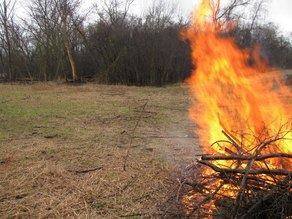Air Mail! - Acid Snow and Spring Burn Ban
The New York State Department of Environmental Conservation sent this bulletin on 03/21/2019 05:44 PM EDT |
| DEC Delivers - Information to keep you connected and informed from the NYS Department of Environmental Conservation |
| Share or view as a web page || Update preferences or unsubscribe |
This Month’s Topics: |
Public & Stakeholder Participation Information:
Additional information and access to past announcements are on our Public & Stakeholder Participation Information page. Air Mail! will now be the publication to announce public and stakeholder information about air quality topics. All NYS residents are environmental stakeholders – we welcome anyone to join the information sessions and other opportunities posted here. Snowpack and Acid RainSnow melt in spring signals many new arrivals, like sprouting crocus bulbs, bird songs and lots of mud for your dog to get into. It can also deliver a pulse of acidified water to mountain lakes, ponds and streams. Like a warehouse packed with goods, snowpack stores water and pollution from the skies and releases its hazardous content when warmer weather finally returns.
Air pollution and acidifying clouds happen year-round, regardless of the season. Whether rain or snow, or icy clouds shrouding Whiteface Mt., acid deposited over land and forests puts our natural resources at risk. Decades ago, when the acid problem was discovered and documented, many lakes and ponds in NY’s mountain areas were lifeless. Through research and regulatory actions, these waters are now showing great promise of recovery (PDF). Over many years, NY has made substantial progress in reducing its own sources of nitrogen oxides and sulfur dioxide through reductions in emissions from a spectrum of sources including power plants, industrial sources, and motor vehicles. Now, almost all acid-causing air pollutants affecting our mountainous regions are transported from outside the state. When spring finally comes to the Adirondacks and Catskills – rivers and streams rise, ski areas close, and ice fishing shanties disappear from lakes – think about that surge of acidic snowmelt inundating waterways and surrounding land, compromising the health of living creatures in its path. Simple steps, such as turning off lights and televisions, using public or zero-emissions transportation, and switching to renewable energy sources, will go a long way toward reducing the acidic load on our waterways every spring. Want to learn more? The US Geological Survey has a great site to visit. Start of the Annual Spring Burn Ban
March 16 marked the first day of the annual spring burn ban, which continues until May 14 statewide. This statewide ban temporarily outlaws burning residential brush and yard debris. Warm spring temperatures and lack of snow cover create drier conditions and increased fire risk. The ban does not prohibit small campfires fueled by charcoal or untreated wood. Remember to never leave a campfire unattended and to completely extinguish it when you are done. Also, remember that burning trash and leaves is never allowed in NYS at any time of the year. Since the annual spring burn ban was enacted in 2009, spring wildfires have decreased by more than 40 percent. Be sure to always check the Fire Danger Map, which is posted on the DEC website and on the free New York Fishing, Hunting & Wildlife App, to know the fire risk in your area. Join the Team!Do you have a bachelor's degree or higher in engineering or engineering technology? NYS employs more than 2,000 engineers in various agencies across the state, including DEC. Learn more about career opportunities in engineering with NYS on Civil Service's website. Dates to Remember:
Stay Informed about Your Air QualityNew York's ozone season runs from April through September. DEC publishes ground-level ozone forecasts during ozone season, and particulate matter pollution forecasts year-round using the Air Quality Index (AQI). DEC sends out an air quality alert when there is a high AQI value, which indicates polluted air. Individuals with pre-existing respiratory or cardiovascular conditions, and people who exercise outdoors should take caution during an air quality alert. Find out if an Air Quality Alert is in effect by calling the toll-free Ozone Hotline: 1-800-535-1345. The AQI can be accessed in three ways:
We would like to know what you think. Please send your Air Mail! questions or comments to us at DAR.web@dec.ny.gov. |

 Public & Stakeholder Participation Information
Public & Stakeholder Participation Information

 On March 13, Forest Ranger John Franceschina responded to two small wildfires in Flushing Meadows Park. These were the first reported wildfires in the state, marking the beginning of the 2019 spring fire season. The wildfires burned 1.1 acres and were suppressed by the New York City Fire Department.
On March 13, Forest Ranger John Franceschina responded to two small wildfires in Flushing Meadows Park. These were the first reported wildfires in the state, marking the beginning of the 2019 spring fire season. The wildfires burned 1.1 acres and were suppressed by the New York City Fire Department.